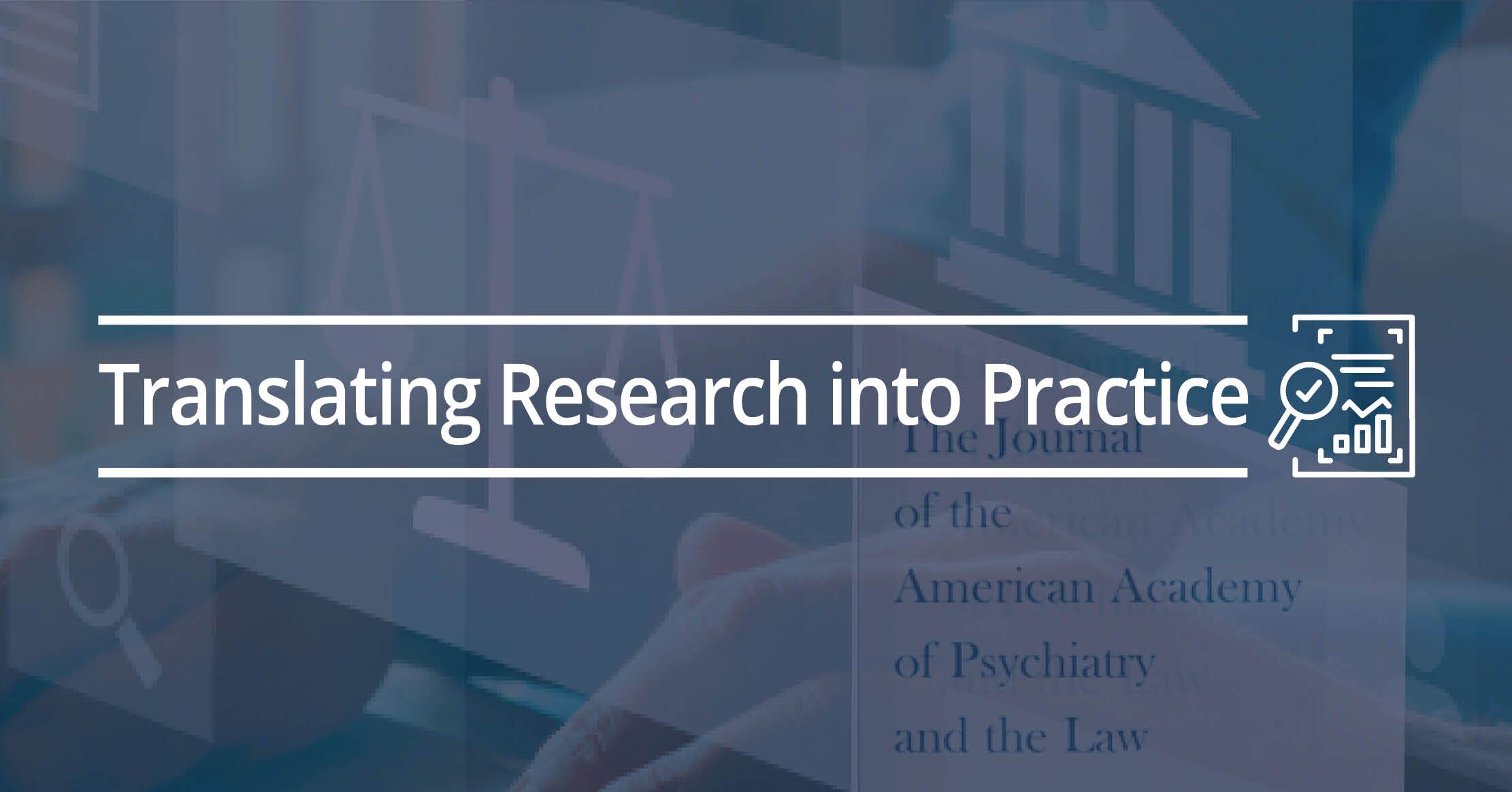Featured Article
Article Title
Insights from California on Involuntary Commitment for Substance Use
Authors
Stephen L. Weiner- UC Davis, Davis, CA
Berneen Bal- Research, Kaiser Permanente Oakland Adult Psychiatry Residency Training Program, Oakland, CA
Matthew E. Hirschtritt- Research, Kaiser Permanente Oakland Adult Psychiatry Residency Training Program, Oakland, CA.; Kaiser Permanente Northern California Division of Research, Oakland, CA
Alex Barnard- Sociology, New York University, New York, NY.
Abstract
Involuntary commitment (IC) for the treatment of substance use disorders is a highly controversial and poorly understood practice, with California offering a striking example. The state’s involuntary commitment laws, known collectively as Lanterman-Petris-Short, authorized IC for grave disability related to chronic alcoholism. These provisions remain shrouded in obscurity, and data on their usage are lacking. Amid the ongoing debate over the utility of IC as a tool to treat severe substance use disorders and legislation expanding IC for substance use disorders (SUDs) in California and other states, this article highlights the need to better study the use and effectiveness of existing legislation as well as to consider upstream interventions, such as expansion of community-based treatment models.
Keywords
addiction; assisted outpatient treatment; civil commitment; legal regulation of psychiatry
Summary of Research
“Alcohol use disorder (AUD) poses a significant societal burden. The nationwide lifetime prevalence of severe AUD is nearly 15 percent; the figure increases to 29.1 percent when all severity levels of AUD are considered… Excessive alcohol consumption is the fourth leading cause of preventable death in the United States, and chronic use can lead to a vast array of diseases…although a variety of evidence based psychosocial and medication treatments exist for AUD, the disorder remains undertreated…
…Some cases of severe AUD may result in the individual being unable to manage their care safely in the community. One approach to managing these individuals is involuntary commitment (IC). IC is a contentious legal process that typically begins by forcibly detaining an individual to provide treatment in a medical or psychiatric facility. The legal criteria for IC are highly variable from state to state but are commonly based on the dangerousness standard, in which detainment is pursued because an individual is believed to be a danger to self or others. A 2016 study found that 19 states permit IC for inability to care for oneself due to a mental disorder (commonly known as grave disability), and 35 states also permit the use of IC for dangerousness or grave disability arising from substance use, such as alcohol. Unfortunately, there is a lack of data or studies on the application or effectiveness of IC for substance use specifically” (p. 338).
“Two forms of detainment specified by the act (a 14-day hold and a temporary conservatorship lasting up to 30 days) could be applied related to grave disability attributed to chronic alcoholism…Unfortunately, data on the use of the chronic alcoholism criterion have been lacking since the earliest days of LPS, limiting evidenced-based judgments of its effectiveness. This follows a broader pattern seen across the United States, in which there are few data to be found on the use of IC for psychiatric or substance use conditions. This has not stopped California, like other states, from revising its IC laws in efforts to better address persistently high rates of substance use, homelessness, and other challenges that intensified after the drafting of landmark IC legislation in the 1960s…
…Early IC reform efforts in California were ambivalent on the question of criminalized substance use…On the other hand, by permitting IC and psychiatric care for chronic alcoholism, LPS implicitly acknowledged that a certain subset of individuals struggling with problematic alcohol use were better served in a hospital than a jail…
…The extent to which IC is used for people experiencing chronic alcoholism remains largely unknown, complicating legislative initiatives for reform or allocation of appropriate resources for treating AUD.” (p. 340).
“Despite an incomplete understanding of how commitment laws are used in cases of chronic alcoholism, there have been various efforts at LPS reform as it relates to substance use. Among the most significant of these came in 2018 with the implementation of California Welfare & Institutions Code (WIC) § 5450,40 which acknowledges the co-morbid intersection of homelessness, substance use disorder, and primary psychiatric pathology…
…The use of the term substance use disorder in WIC § 5450, as opposed to the much narrower chronic alcoholism found in WIC § 525015 and WIC§5350, points to an unfortunate reality: the types and prevalence of problematic substance use, including AUD, have changed dramatically since the drafting of LPS over 50 years ago. Although rates of problematic alcohol use were difficult to quantify because of inconsistent definitions of alcoholism prior to the publication of DSM-III, one year prevalence of alcohol dependence and abuse was estimated to be 4.4 percent in the Diagnostic and Statistical Manual of Mental Disorders,Third Edition, Revised (DSM-III-R). This figure increased to 7.4 percent in DSM-IV. The DSM-5 estimates the one year prevalence of AUD to be 8.5 percent. In a 2018 study, six percent of Californians met criteria for AUD, compared with three percent for all illicit substance use disorders…
…California, like other states, has also witnessed the rise of other use disorders…Attempts to modify mental health law to address changes in substance use trends are best exemplified by two recent and controversial California Senate Bills. Senate Bill 326, signed into law in October 2023, asked voters to approve a change to the 2004 Mental Health Services Act (MHSA) to include treatment of those with substance use disorders (SUDs)” (p. 341).
Translating Research into Practice
“The question of whether IC for substance use constitutes a strategy worth pursuing is complex and outside the scope of this article, which seeks only to underline the importance of data collection…Opinions on this debate appear to shift cyclically, and there is currently a national push to loosen or broaden commitment criteria” (p. 342).
“As a first step, states that authorize civil commitment for SUDs should conduct more thorough data collection on how relevant statutes are currently used before expanding involuntary care further. In the case of California, SB 43’s approach involved IC statutes being broadened before data on their use were examined in greater detail. Ideally, this investigation would occur before IC legislation related to SUD is significantly revised…Additional less restrictive interventions may be able to help individuals avoid IC for SUDs as well…additional research is needed to examine and address the social determinants of health that place an individual at risk of requiring involuntary commitment, including conservatorship…
…Other less-restrictive approaches include assertive community treatment (ACT) and assisted outpatient treatment (AOT). ACT provides intensive, community based care for patients who have severe mental illness but might also be adapted to support the needs of people with substance use disorders” (p. 343).
“Increased data collection on the use of commitment laws for SUDs, such as IC for alcoholism in California, could better inform evidence-based policymaking” (p. 344).
Other Interesting Tidbits for Researchers and Clinicians
“Alcoholism was not recognized as an independent diagnosis until the publication of Diagnostic and Statistical Manual of Mental Disorders, Third Edition (DSM-III) in 1980, 12 years after Powell. DSM-III also abandoned the term alcoholism and created two separate diagnoses: alcohol dependence and alcohol abuse. This classification was retained in Diagnostic and Statistical Manual of Mental Disorders, Fourth Edition (DSMIV), and it was not until Diagnostic and Statistical Manual of Mental Disorders, Fifth Edition (DSM-5) in 2013 that these diagnoses were combined into the parsimonious alcohol use disorder to integrate both physiologic and behavioral aspects of problematic substance use into a single set of diagnostic criteria” (p. 339).
“In 2022, California’s state legislature passed the Community Assistance, Recovery, and Empowerment (CARE) Act, a form of court ordered treatment that lasts up to two years and is designed to treat those experiencing serious mental illness as well as substance use disorders. The intervention is expressly designed to avoid downstream interventions, such as LPS conservatorship, in cases of severe SUD and mental illness” (p. 343).
Additional Resources/Programs
As always, please join the discussion below if you have thoughts or comments to add!




























